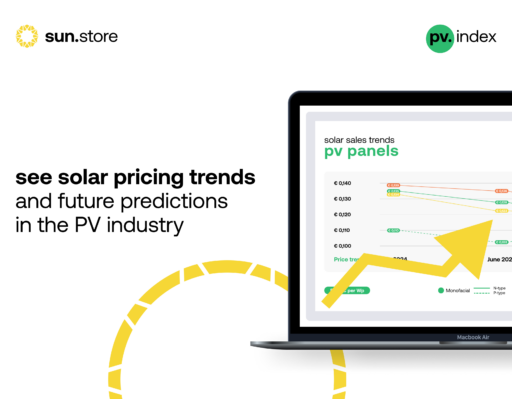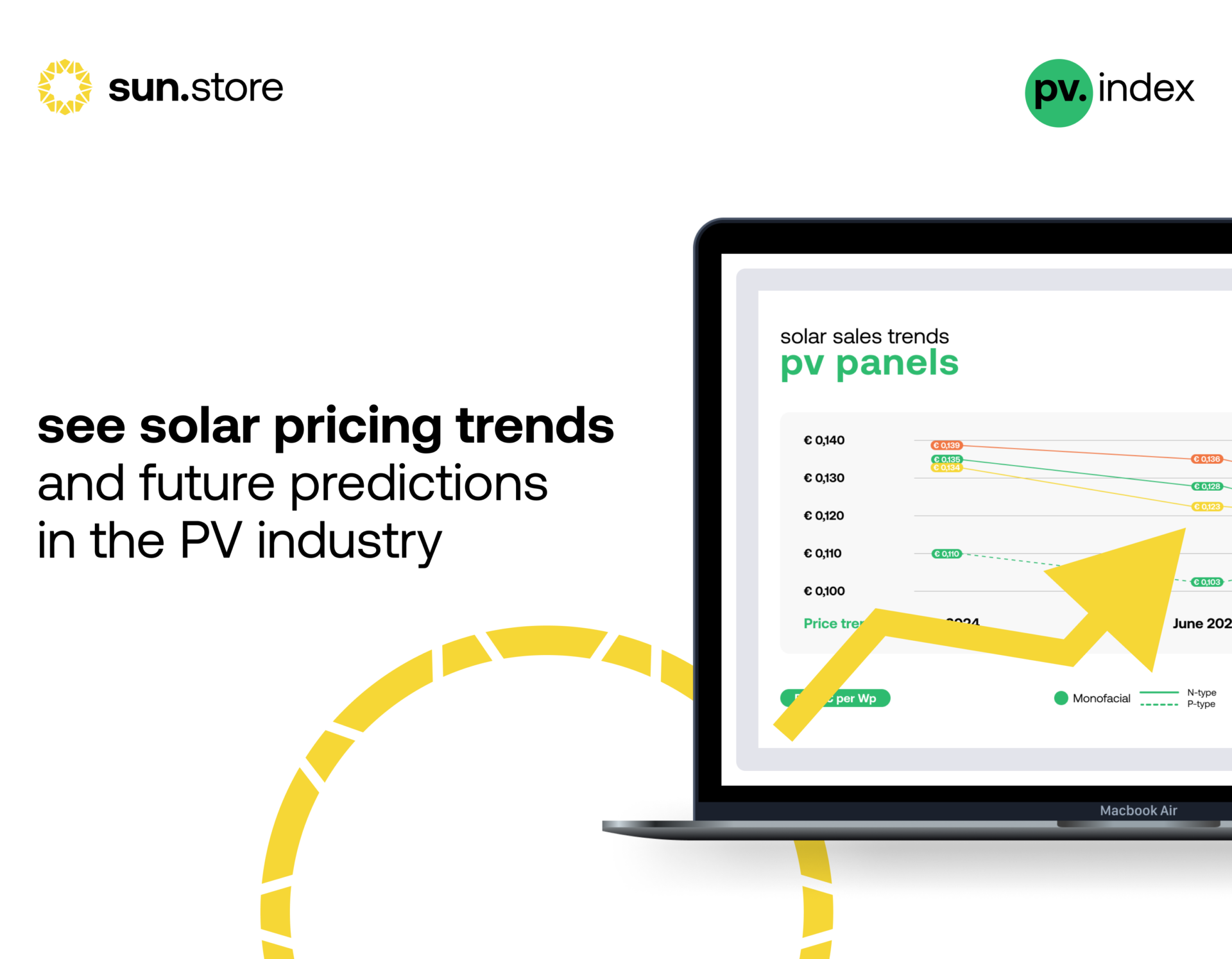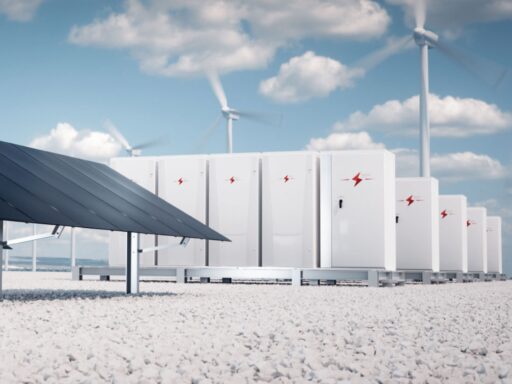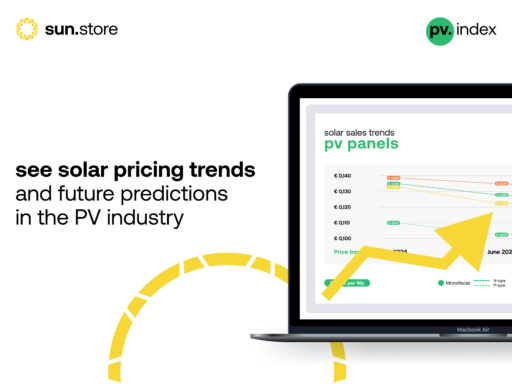Aiko drops out of the Top 5 as pv.index revises brand ranking
After several months of subdued market activity, September brought renewed stability to the European PV sector. Module and inverter prices remained broadly flat, with only minor adjustments across technologies, while the pv.index PMI rose for the first time since May – a sign that installers and distributors are regaining modest confidence as Q4 approaches. The highlight of this edition is a reshuffle in brand rankings – Aiko drops out of the Top 5, replaced by Canadian Solar, and in the string inverter category Fronius enters the Top 5, replacing Solis.
Solar module market reaches a new equilibrium
The European solar module market entered a phase of stability in September, signaling that the sharp price corrections observed in the first half of the year have largely run their course. Prices across all major technologies remained steady, with only minor downward adjustments in specific segments.
The newly refined pv.index segmentation, now distinguishing between TOPCon (bifacial and monofacial), PERC, and Full Black, provides a more accurate reflection of actual sales trends and pricing structures across the market.
- TOPCon bifacial modules recorded a 2% decline, from €0.097/Wp to €0.095/Wp, marking a moderate adjustment after several stable months.
- TOPCon monofacial prices remained unchanged at €0.099/Wp, supported by balanced supply and stable demand.
- PERC modules held steady for the fourth consecutive month at €0.077/Wp, maintaining their strong position in cost-driven projects.
- Full Black modules also remained flat at €0.099/Wp, reflecting steady interest in premium residential installations.
Overall, September data confirm that the PV module market has reached a state of equilibrium: price volatility is low, inventories are manageable, and distributors are maintaining healthy turnover levels without aggressive price movements.
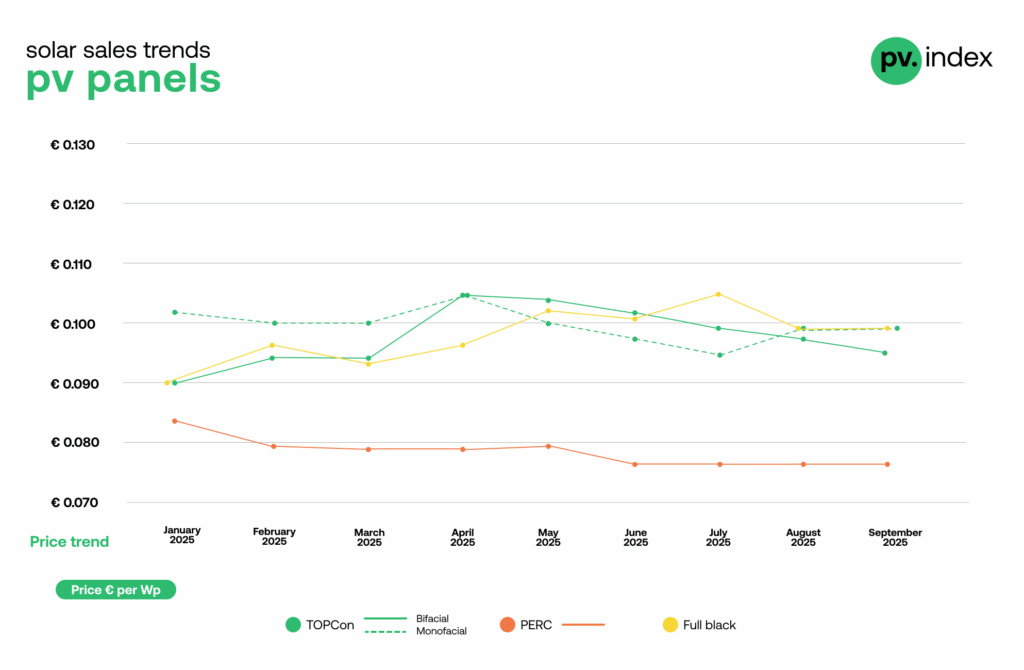
Aiko out, Canadian Solar in: pv.index updates Top 5 brands
To maintain alignment with actual sales data, pv.index introduced a revised ranking of the Top 5 PV brands. Based on cumulative 2025 sales performance, Canadian Solar has entered the list, replacing Aiko. Canadian Solar’s entry reflects its strong European footprint and competitive channel strategy, but also somewhat reduced interest in Aiko, which had previously generated a lot of buzz.
Throughout the year, Jinko and LONGi have for the most part alternated in the leading positions, while JA Solar and Trina consistently occupy the following ranks.
Top 5 solar panel brands – September 2025
- LONGi
- Jinko
- Trina
- JA Solar
- Canadian Solar
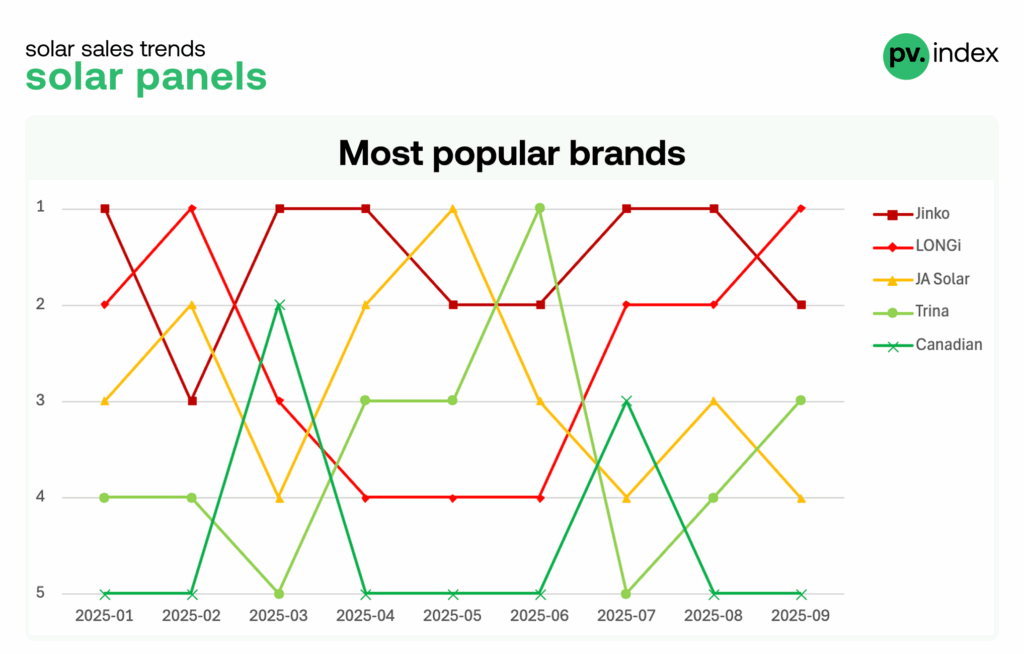
Inverter prices continue their gradual correction
In the inverter segment, prices continued to edge slightly lower in <15 kW segment and stabilized in >15 kW segment.
- Hybrid inverters
- <15 kW: down 2%, from €99.52/kW to €97.41/kW.
- >15 kW: up 1%, from €80.77/kW to €81.28/kW, reflecting stable commercial demand.
- <15 kW: down 2%, from €99.52/kW to €97.41/kW.
- String inverters
- <15 kW: down 3%, now at €45.32/kW, marking another month of soft correction.
- <15 kW: down 3%, now at €45.32/kW, marking another month of soft correction.
>15 kW: up 1% to €24.50/kW, following several months of limited movement, confirming that inverter pricing is stabilizing across power classes.
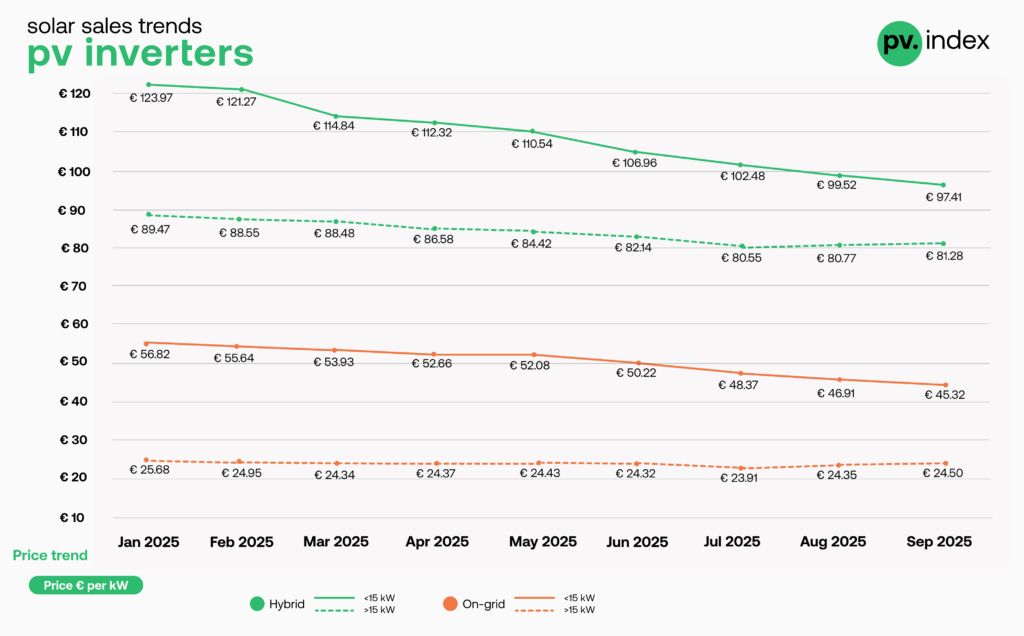
Huawei strengthens its lead in inverters
Hybrid inverters: Huawei climbs to first place
The hybrid inverter segment saw continued momentum for Huawei, which reached the top position after a steady rise since July. Deye remains strong in second place, followed by GoodWe, Fronius, and Sungrow.
This marks a notable shift in the competitive landscape, as Huawei consolidates its dominance through a broad product range and deep market penetration in both residential and small commercial installations.
Top 5 hybrid inverter brands: September 2025
- Huawei
- Deye
- GoodWe
- Fronius
- Sungrow
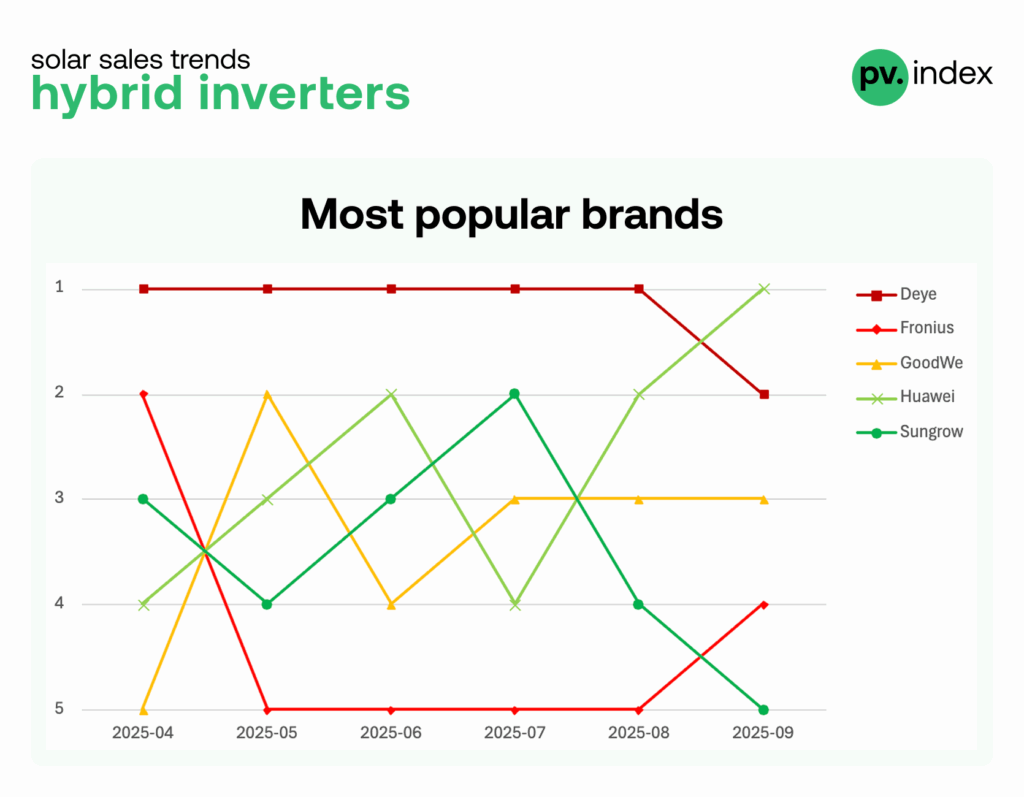
String inverters: Huawei maintains firm leadership
In the string inverter category, Huawei continues to hold a firm lead, maintaining an undisputed first place throughout the year.
SMA reclaimed the second position, ahead of Sungrow, while SolarEdge and Fronius now complete the updated Top 5.
This month’s ranking reflects a methodological revision by pv.index: Fronius replaces Solis in the list, following an update to the underlying sales dataset to better capture actual transaction volumes on the sun.store platform.
The overall segment remains stable and mature, characterized by consistent brand preferences and strong customer loyalty among European installers.
Top 5 string inverter brands: September 2025
- Huawei
- SMA
- Sungrow
- SolarEdge
- Fronius
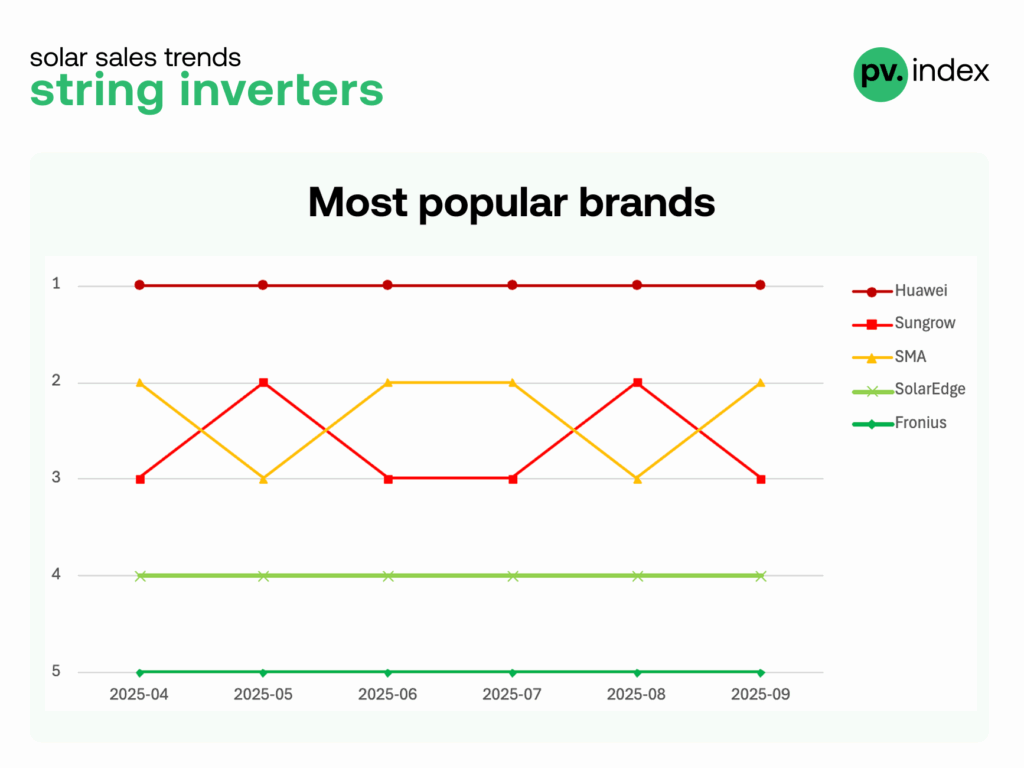
PV PMI rebounds slightly after summer slowdown
The pv.index PMI inched up from 65 to 66 points in September, ending a three-month decline. The improvement, though modest, indicates a slight recovery in short-term purchasing confidence.
Survey data from 933 sun.store users show that:
- 45% of respondents plan to buy more PV products next month,
- 13% expect to buy less,
- 42% anticipate no change in purchasing levels.
This rebound suggests that distributors are gradually replenishing inventories after the slow summer months, anticipating steadier Q4 activity.
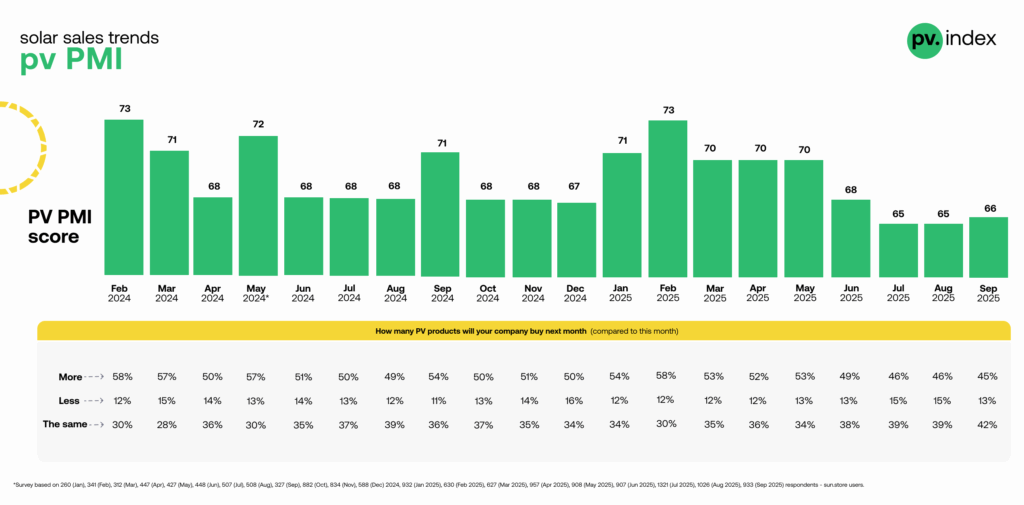
*Calculated as PMI = (P1 x 1) + (P2 x 0.5) + (P3 x 0.5) — where P1 is improvement, P2 no change, and P3 deterioration. This score highlights a market adapting to supply constraints while gearing up for the peak installation season.
Expert commentary
“The September data confirms that the European PV market is entering a new phase of normalization,” – notes Filip Kierzkowski – Head of Partnerships & Trading at sun.store
“After two years of rapid price corrections, the sector is now finding balance between production capacity, pricing, and demand. Stable module prices, slower inverter depreciation, and a modest improvement in PMI together signal a more sustainable market environment.
The entry of Canadian Solar into the top five brands and Huawei’s strengthened position in both inverter categories highlight how market leadership is consolidating around a few highly competitive global players. Heading into Q4, the focus will likely shift from price competition to operational efficiency and strategic stock management.”
Summary
September’s pv.index reflects a market in consolidation mode: stable prices, improving sentiment, and clearer competitive structures. While demand remains moderate, both installers and distributors appear more confident heading into the final quarter.
With logistics pressures easing and exchange rates stabilizing, the European PV sector looks poised for a steady, sustainable close to 2025.
 EN
EN ES
ES DE
DE PL
PL IT
IT FR
FR GR
GR